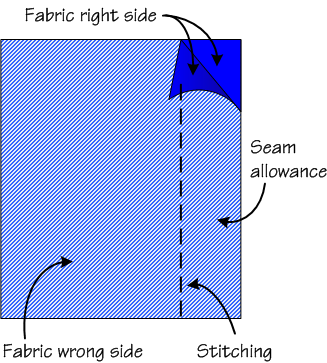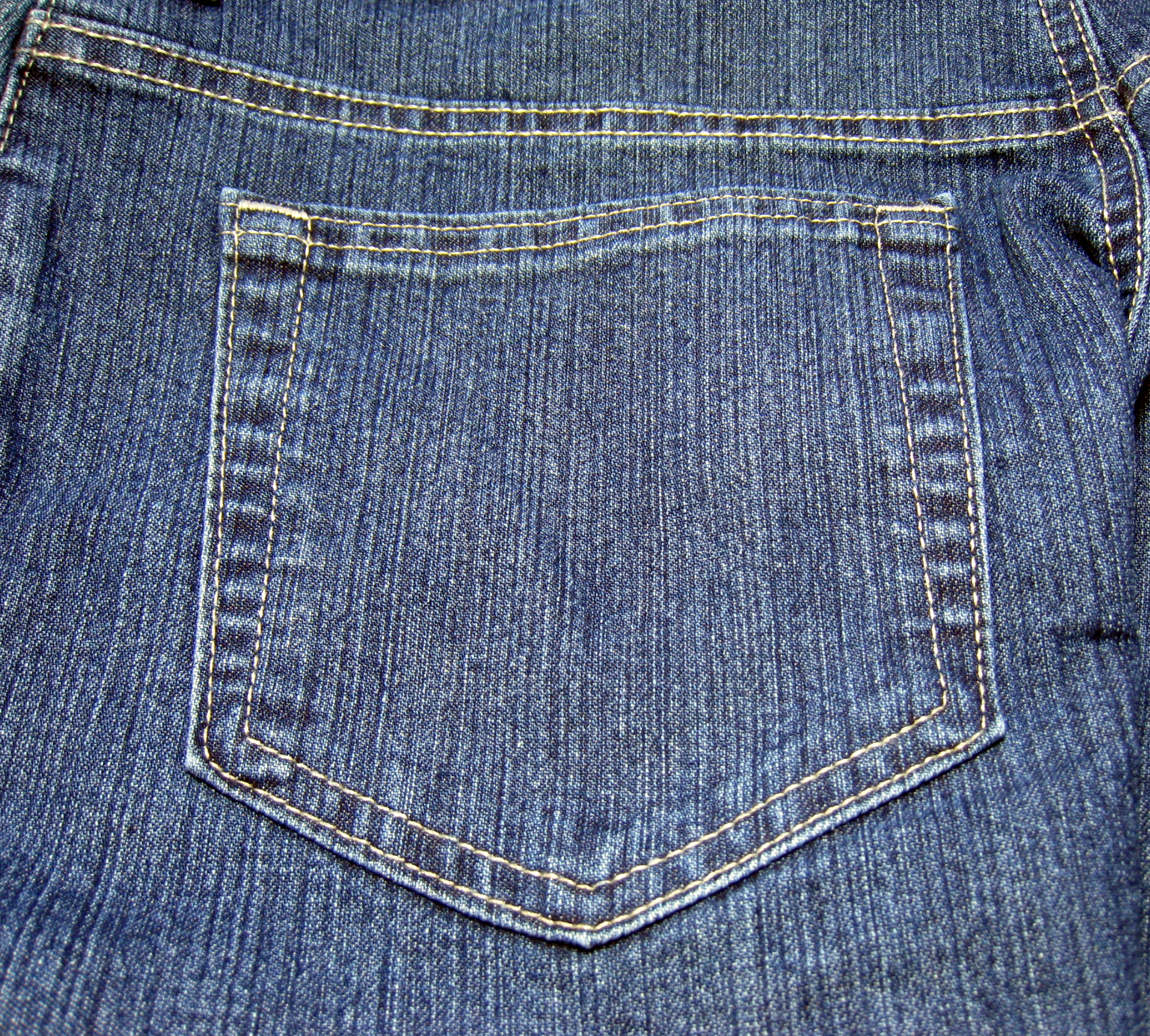|
Tracing Wheel
A tracing wheel, also known as a pattern wheel, pounce wheel, and dart wheel, is an instrument with multiple teeth on a wheel attached to a handle. The teeth can be either serrated or smooth. It is used to transfer markings from sewing patterns onto fabric with or without the use of tracing paper, and can be used to make slotted perforations. Such markings might include pleats, darts, buttonholes, notches or placement lines for appliques or pockets. The double tracing wheel has two parallel wheels that can be positioned a variable distance apart. This tool can be used to transfer parallel pattern lines onto fabric, such as both the cutting line and the sewing line, where the distance between them is the seam allowance. See also * Pattern notcher * Wartenberg wheel * Pouncing Pouncing is an art technique used for transferring an image from one surface to another using a fine powder called pounce. It is similar to tracing, and is useful for creating copies of a sketch outl ... [...More Info...] [...Related Items...] OR: [Wikipedia] [Google] [Baidu] |
Buttonhole
Buttonholes are reinforced holes in fabric that buttons pass through, allowing one piece of fabric to be secured to another. The raw edges of a buttonhole are usually finished with stitching. This may be done either by hand or by a sewing machine. Some forms of button, such as a frog, use a loop of cloth or rope instead of a buttonhole. Buttonholes can also refer to flowers worn in the lapel buttonhole of a coat or jacket, which are referred to simply as "buttonholes" or ''boutonnières''. History Buttonholes for fastening or closing clothing with buttons appeared first in Germany in the 13th century. However it is believed that ancient Persians used it first. They soon became widespread with the rise of snug-fitting garments in 13th- and 14th-century Europe. Aspects of buttonholes Buttonholes often have a ''bar'' of stitches at either side of them. This is a row of perpendicular hand or machine stitching to reinforce the raw edges of the fabric, and to prevent it from fraying ... [...More Info...] [...Related Items...] OR: [Wikipedia] [Google] [Baidu] |
Pouncing
Pouncing is an art technique used for transferring an image from one surface to another using a fine powder called pounce. It is similar to tracing, and is useful for creating copies of a sketch outline to produce finished works. Art Pouncing has been a common technique for centuries, used to create copies of portraits and other works that would be finished as oil paintings, engravings, and so on. The most common method involves laying semi-transparent paper over the original image, then tracing along the lines of the image by creating pricked marks on the top sheet of paper. This pounced drawing made of pricked holes is laid over a new working surface. A powder such as chalk, graphite or pastel is forced through the holes to leave an outline on the working surface below, thus transferring the image. The powder is applied by being placed into a small bag of thin fabric such as cheesecloth, then dabbed onto the pricked holes of the pounced drawing. Examples of pouncing in art ... [...More Info...] [...Related Items...] OR: [Wikipedia] [Google] [Baidu] |
Wartenberg Wheel
A Wartenberg wheel, also called a Wartenberg pinwheel or Wartenberg neurowheel, is a medical device for neurological use. The wheel was designed to test nerve reactions ( sensitivity) as it rolled systematically across the skin. A Wartenberg wheel is generally made of stainless steel with a handle of approximately in length. The wheel, which has evenly spaced radiating sharp pins, rotates as it is rolled across the flesh. A disposable plastic version is available. Because of hygienic concerns, these devices are rarely used for medical purposes any more. Robert Wartenberg, namesake of the Wartenberg wheel, is sometimes incorrectly credited as its inventor. According to Wartenberg himself, the device was in widespread use in Europe when he lived in Germany. While he did not invent it, he found it "an indispensable part of the outfit for everyday neurologic practice," and recommended its use to his colleagues in the US. The Wartenberg wheel is also used as a sensation sex toy, and ... [...More Info...] [...Related Items...] OR: [Wikipedia] [Google] [Baidu] |
Pattern Notcher
A pattern notcher is a common tool used in patternmaking and sewing that creates a notch in a paper pattern A pattern is a regularity in the world, in human-made design, or in abstract ideas. As such, the elements of a pattern repeat in a predictable manner. A geometric pattern is a kind of pattern formed of geometric shapes and typically repeated l .... Notches are used to align pattern pieces. Notches in the paper are more useful than marks on the paper as they allow the mark to be seen whether pattern paper is face up or face down. See also * Tracing wheel References Tools Sewing equipment {{textile-arts-stub ... [...More Info...] [...Related Items...] OR: [Wikipedia] [Google] [Baidu] |
Seam Allowance
Seam allowance (sometimes called inlays) is the area between the fabric edge and the stitching line on two (or more) pieces of material being sewn together. Seam allowances can range from wide to as much as several inches. Commercial patterns for home sewers have seam allowances ranging from . A 5/8″(1.5cm) seam allowance provides enough extra between the seam line and the cut edge of the fabric to make sure that the fabric will be safely caught as they are being joining together. This is particularly important when working with fabrics that ravel easily.Snuggerud, S. (2007). ''What is a seam allowance?'' Heirloom Creations. https://www.heirloomcreations.net/what-is-a-seam-allowance/ Sewing industry seam allowances range from for curved areas (e.g. neck line, armscye In sewing, the armscye is the armhole, the fabric edge to which the sleeve is sewn. The length of the armscye is the total length of this edge; the width is the distance across the hole at the widest point. Et ... [...More Info...] [...Related Items...] OR: [Wikipedia] [Google] [Baidu] |
Pockets
A pocket is a bag- or envelope-like receptacle either fastened to or inserted in an article of clothing to hold small items. Pockets are also attached to luggage, backpacks, and similar items. In older usage, a pocket was a separate small bag or pouch. Origins Ancient people used leather or cloth pouches to hold valuables. Ötzi (also called the "Iceman"), who lived around 3,300 BCE, had a belt with a pouch sewn to it that contained a cache of useful items: a scraper, drill, flint flake, bone awl, and a dried tinder fungus. In European clothing, fitchets, resembling modern day pockets, appeared in the 13th century. Vertical slits were cut in the super tunic, which did not have any side openings, to allow access to purse or keys slung from the girdle of the tunic. According to historian Rebecca Unsworth, it was in the late 15th century that pockets became more noticeable. During the 16th century, pockets increased in popularity and prevalence. In slightly later European cloth ... [...More Info...] [...Related Items...] OR: [Wikipedia] [Google] [Baidu] |
Line
Line most often refers to: * Line (geometry), object with zero thickness and curvature that stretches to infinity * Telephone line, a single-user circuit on a telephone communication system Line, lines, The Line, or LINE may also refer to: Arts, entertainment, and media Films * ''Lines'' (film), a 2016 Greek film * ''The Line'' (2017 film) * ''The Line'' (2009 film) * ''The Line'', a 2009 independent film by Nancy Schwartzman Podcasts * ''The Line'' (podcast), 2021 by Dan Taberski Literature * Line (comics), a term to describe a subset of comic book series by a publisher * ''Line'' (play), by Israel Horovitz, 1967 * Line (poetry), the fundamental unit of poetic composition * "Lines" (poem), an 1837 poem by Emily Brontë * ''The Line'' (memoir), by Arch and Martin Flanagan * ''The Line'' (play), by Timberlake Wertenbaker, 2009 Music Albums * ''Lines'' (The Walker Brothers album), 1976 * ''Lines'' (Pandelis Karayorgis album), 1995 * ''Lines'' (Unthanks album), 201 ... [...More Info...] [...Related Items...] OR: [Wikipedia] [Google] [Baidu] |
Dart (sewing)
Darts are folds (tucks coming to a point) sewn into fabric to take in ease and provide shape to a garment, especially for a woman's bust. They are used frequently in all sorts of clothing to tailor the garment to the wearer's shape, or to make an innovative shape in the garment. Fabric may be thought of as flat, and a dart has the effect of removing a wedge shaped piece and pulling the edges of that wedge together to create a shallow cone. This effect can be seen quite easily with a paper pattern by pulling together the edges of a dart intake as it would be sewn. Since fabric is generally more flexible than paper the fabric will shift around the apex of the cone and form a softer, but still curved, shape. In a garment a dart ends in a point at a full area of the body. A dart in a flat pattern has two important properties: its point, the point in the pattern at which the dart aims or converges, and the intake, or the amount of fabric taken in or removed. Since the dart can extend ... [...More Info...] [...Related Items...] OR: [Wikipedia] [Google] [Baidu] |
Pleat
A pleat (plait in older English) is a type of fold formed by doubling fabric back upon itself and securing it in place. It is commonly used in clothing and upholstery to gather a wide piece of fabric to a narrower circumference. Pleats are categorized as ''pressed'', that is, ironed or otherwise heat-set into a sharp crease, or ''unpressed'', falling in soft rounded folds. Pleats sewn into place are called tucks. Types Accordion Accordion pleats or knife pleats are a form of tight pleating which allows the garment to expand its shape when moving. Accordion pleating is also used for some dress sleeves, such as pleating the end of the elbow, with the fullness of the pleat gathered closely at the cuff. This form of pleating inspired the "skirt dancing" of Loie Fuller. Accordion pleats may also be used in hand fans. Box Box pleats are knife pleats back-to-back, and have a tendency to spring out from the waistline.Picken, Mary Brooks, ''The Fashion Dictionary'', p. 257 They ha ... [...More Info...] [...Related Items...] OR: [Wikipedia] [Google] [Baidu] |
Perforations
A perforation is a small hole in a thin material or web. There is usually more than one perforation in an organized fashion, where all of the holes collectively are called a ''perforation''. The process of creating perforations is called perforating, which involves puncturing the workpiece with a tool. Perforations are usually used to allow easy separation of two sections of the material, such as allowing paper to be torn easily along the line. Packaging with perforations in paperboard or plastic film is easy for consumers to open. Other purposes include filtrating fluids, sound deadening, allowing light or fluids to pass through, and to create an aesthetic design. Various applications include plastic films to allow the packages to breathe, medical films, micro perforated plate and sound and vapor barriers. Processes Pins and needles Rotary pinned perforation rollers are precision tools that can be used to perforate a wide variety of materials. The pins or needles can b ... [...More Info...] [...Related Items...] OR: [Wikipedia] [Google] [Baidu] |






